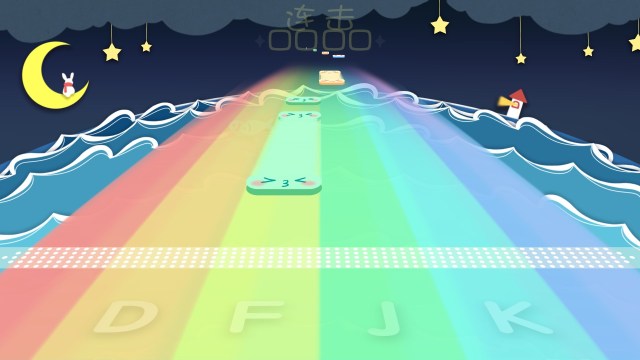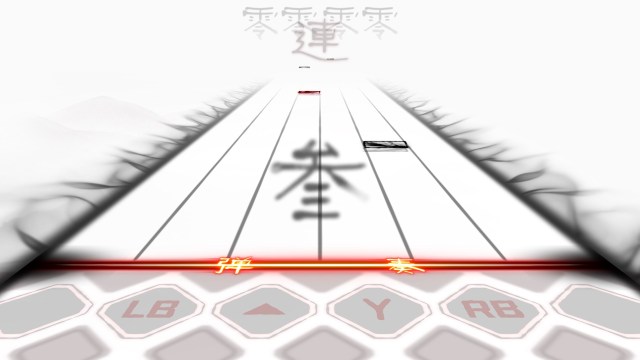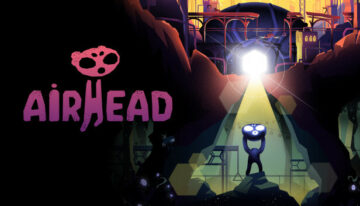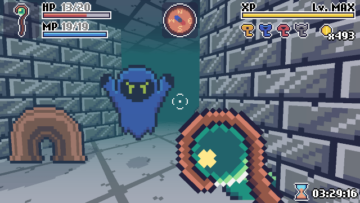For some time now, Nintendo has been the home for niche rhythm action titles. Cytus ɑ, Taiko No Tatsujin, VOEZ, the Theatrhythm games and a load of Hatsune Miku titles can all be found on Nintendo platforms. If you got your kicks from tapping along to J-pop gems, then you probably bought yourself a Switch.
But, hol’ up, as the times they are a-changing. Taiku No Tatsujin: The Drum Master has arrived on the Xbox, plastic drum and all, while Hatsune Miku has been dipping a tentative, pixelated toe into the pool with jigsaw puzzles and picross. Significantly (and pertinent to this review), the Xbox has also landed MUSYNX. This is something of a coup, as MUSYNX has been quietly delivering to its niche audience for years on the Nintendo Switch.
The proposition is slightly different than on Switch. Rather than launching as an expensive one-shot product, there’s more of a DLC and season pass approach on the Xbox. You can purchase the base game of MUSYNX for £3.29, getting a surprisingly large number of songs, and then mull over whether to invest in its DLC. There are six song packs available individually, or you can combine them all – including a season pass promise of more songs – in one £16.74 deluxe edition dollop.
It’s a complicated set up that, admittedly, confused the hell out of us. But we’re advocates of either the base or deluxe versions of the game. As a base, you’re still getting more songs than your conventional Just Dance or Let’s Sing, all for the price of a London pint. And the Deluxe Edition’s songlist is plain silly. You can spend five minutes just scrolling down the setlist: there are hundreds of songs here, and you’ll likely never need to hear another J-pop title again.
One of the reasons we love MUSYNX so much is the music itself. You might equate the quality of a setlist with how well you know it, like in a Rock Band, for example. But MUSYNX has a different approach. You will not have heard of many, if any, of the songs here. There’s a Carly Rae Jepsen cover and some tracks from obscure video games (Candleman, anyone?), but mostly these are unknowns. But just because they haven’t been imported to our shores doesn’t mean they’re poor. In fact, the vast majority of MUSYNX’s setlist are sincere bangers. There’s chiptune belters, heartfelt ballads, some Final Fantasy-style soaring orchestral pieces, and even the odd bit of Japanese house. And they are all made for rhythm action, with metronomic percussion and big-beats that make them a joy to play.
The gameplay itself might surprise, in that it’s not innovative in the slightest. There are four lanes (six, if you are ambitious and playing on MUSYNX’s 6K mode), and they map to Left, Up, X and B on your gamepad. Notes cascade down like they were seconded from Guitar Hero, and you have to press the buttons in time to the beat. Consecutive notes build up a combo, which in turn elevates your score, giving you an EX or S Rank if you’re particularly adept.

Initially, we weren’t impressed. How could we be? There’s nothing here that hasn’t been done in every rhythm action game ever. In fact, it’s missing the plasticky peripherals, the career mode campaigns and the chance to play Dragonforce like a loon. It’s almost retrograde in its simplicity.
BUT, and it is a large BUT, complication can suck and simplicity is often what you need. There is a reason that people still play Dance Dance Revolution, and Rock Band still gets fortnightly additions to its setlist. It’s not for their campaigns or nuanced approaches to the genre; it’s because people just want to tap in time to some absolute tracks.
We’ll give you something, though: the mapped buttons are an odd choice. Left, Up, X and B aren’t the most natural of choices for four sequential face buttons, and we found ourselves tied in knots for the first fifteen minutes. But those controls are completely re-mappable, and it is possible to programme your muscle memory to make them work. Suddenly, everything is as intuitive as absent-mindedly drumming on your thigh.
Soon, we were flying through the various difficulty rankings, which leads us to another glowing recommendation: MUSYNX’s approach to challenge. There are ten difficulty settings, which is lovely and granular, giving you a gradual gradient to grow into. But it doesn’t stop there: there are settings agogo, as you can bring the four lanes up to six with the 6K mode; you can increase the playing speed; and you can modulate the music, causing it to unexpectedly wig out in certain moments, completely throwing you off.

A caveat, though: the 6K mode could have been a little more welcoming. The buttons you’ve learned, gradually over dozens of songs, get tossed out of the window the moment you start playing in 6K. The lanes all get re-mapped to different buttons, and it made us wonder why? Would it have been so hard to come up with controls that simply expanded when you moved up to 6K, rather than completely change them up?
Presentationally, as a whole, MUSYNX is something of a mixed bag. Its menus are wonderful, with plenty to fiddle with, and there’s the natty ability to shift from viewing all of the songs as visualised cards to a simple, at-a-glance list. They both have their value, so moving between them at speed is neat. But the backgrounds to the songs themselves are haphazard. You’re not getting Beatles: Rock Band-style animations here. Instead, you’re getting some generic, almost screensaver-like animations, and there are only a dozen or so of them. Worst still, a few of them are terrible. We get the sense that they’re meant to be rudimentary, to capture a certain Japanese art style, but they can be incredibly sketchy and bland, ultimately ending up as distracting.
But let us return, once again, to MUSYNX’s finest achievement: its songs. Unless you have a wild aversion to everything J-pop, there is such quality and quantity on offer here. We promise you that a MUSYNX playlist will start developing in your Spotify, as you find yourself falling in love with weird little corners of Japanese music (and beyond). But it’s in the curation that MUSYNX scores most of its goals: the songs are handpicked for their suitability to rhythm action, and it absolutely shows. The sensation of entering a musical flow, as you find the song’s vibe and stick with it to an S-Rank or higher, cannot be matched.

MUSYNX has a few Herculean trials for you to overcome before you fall in love with it. Its controls are initially impenetrable, and you’ll have to either remap or learn them. Then there’s the difficulty, which – although customisable – also skews towards the fiendish. And then there’s the lack of anything approaching innovation: just the timeless joys of tapping away to the music.
But once you’ve overcome those trials, battered and hardy, you are exposed to the part of MUSYNX that definitely isn’t a trial: it’s music. A relentless volley of J-pop bangers, the setlist of MUSYNX is a lesson in quality and quantity. And while MUSYNX may be simple, it plain works.
You can buy the MUSYNX base game from the Xbox Store. You might also want to opt for the Deluxe Edition.
TXH Score
4/5
Pros:
- Virtually every song is an absolute jam
- Getting in the rhythm action flow can be sublime
- Huge number of options, particularly around difficulty
- Loads of value, even if you just buy the base game
Cons:
- Initially difficult and hard to control
- Doesn’t really do anything new
Info:
- Massive thanks for the free copy of the game go to – E-Home
- Formats – Xbox Series X|S, Xbox One, Switch
- Version reviewed – Xbox Series X
- Release date – 14 July 2022
- Launch price from – £3.29
- 4/5 Review
- amazon prime gaming
- axie infinity
- Casino Games
- coingenius
- EA Sports
- Evil Geniuses
- Gaming
- gaming headset
- gaming pc
- madden nfl
- MUSYNX
- Nintendo
- Online casino games
- pc games
- plato
- plato ai
- plato data intelligence
- plato game
- plato gaming
- platodata
- playstation
- prime gaming
- Reviews
- Team SoloMid
- The Xbox Hub
- xbox
- Xbox Series X
- Xbox Series X Reviews
- zephyrnet












